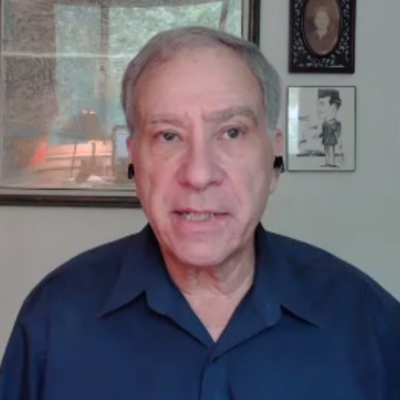Developing and updating energy-efficient building codes involves some serious multitasking, said David Nemtzow, director of the U.S. Department of Energy’s Building Technologies Office.
“Buildings generate roughly 35% of U.S. CO2 emissions, so it’s essential that we lower their carbon footprint,” Nemtzow said in his opening remarks at DOE’s National Energy Codes Conference on Wednesday. “We have to do it while simultaneously balancing affordability, energy reliability and social justice and equity. You have to walk, chew gum and probably juggle bowling pins at the same time. There’s a lot being demanded of energy codes and building energy efficiency and the clean energy workforce.”
As part of the conference, DOE rolled out its official “final determinations” of the potential energy savings for the latest updates of two key national building codes. The national standard for commercial buildings, Standard 90.1-2019, will cut overall energy use for these buildings by 4.7% over the previous standard, while the residential standard, the 2021 International Energy Conservation Code (IECC), is 9.38% more efficient than its predecessor.
These codes are the benchmarks and models used for state and local building codes across the country, and DOE is also upping its support and technical assistance to local jurisdictions looking to pass more efficient and rigorous codes. According to DOE, it will be focusing on emerging opportunities for increasingly ambitious codes, as well as workforce training efforts and providing local jurisdictions with a range of technical analyses to quantify the economic and environmental benefits of code upgrades.
Codes providing high efficiency are “one of the easiest things we can do to make progress in our effort to overcome the climate crisis,” Energy Secretary Jennifer Granholm said in a keynote address. “That’s why we want to guide more homeowners and more builders and more developers towards greater energy efficiency by making higher standards and building codes.”
Both Granholm and Nemtzow backed up their pitch for stronger codes with some heavy-hitting numbers. The road to a net-zero economy by 2050 runs right through the country’s 129 million residential and commercial buildings, which use roughly 40% of the nation’s energy, 30% of which is wasted, Granholm said.
“We pay $100 billion per year on energy we don’t actually use, which of course creates needless emissions and dirties our air and worsens the climate crisis,” she said.
Nemtzow provided figures from DOE’s impact analyses, showing that the updated model building codes could provide $138 billion in savings over the next 20 years and reduce carbon emissions by 900 million metric tons.
Compliance
But like most things related to President Biden’s climate agenda, building codes have become highly politicized. While California’s building code requires all new residential construction to be net-zero, Ohio recently joined the 18 other states that have passed laws prohibiting local jurisdictions from enacting codes that ban natural gas hook-ups in new construction. (See Ohio Lawmakers Vote to Block Local Natural Gas Bans.)
And in Congress, Sen. John Barrasso (R-Wyo.), ranking member of the Senate Energy and Natural Resources Committee, is a constant opponent of funding for DOE’s building code programs because he believes the department will promote such bans.
Granholm and Nemtzow stressed that as with most local policies, one size will not fit all, and active, robust stakeholder engagement is critical to ensuring local voices are heard and incorporated into local solutions.
“We’re asking for a commitment from everyone within the building energy codes community,” said Kelly Speakes-Backman, principal deputy assistant secretary for DOE’s Office of Energy Efficiency and Renewable Energy. “That every process at every level is built around inclusiveness; that it provides participation from new and diverse perspectives; that it is equipped to deliver equitable outcomes.”
On a more practical level, one of the main challenges facing advocates of green and net-zero construction at the regional and state level is ensuring compliance and enforcement of their local codes.
“Policies are one thing, but actually complying with those policies is really important if we’re going to be trying to hit these goals,” Alison Lindburg, senior building policy manager for the Midwest Energy Efficiency Alliance (MEEA), said during a later breakout session on state and local building codes.
“There’s a lack of awareness; city staff resources are small and dwindling,” Lindburg said, reeling off a list of the barriers to compliance. “Energy codes are not a priority; that may not mean that a code official doesn’t want to enforce the code, but if he or she has to make a decision on what’s a priority, [the energy code] may be one that falls to the wayside.”
An MEEA survey found that even when officials are enforcing their local codes, enforcement efforts are often uneven. “Some of them had different interpretations of the code,” Lindburg said. “Some code officials were a little bit more lenient on certain code requirements, and some of them just didn’t think that the energy code was a health and safety code.”
While the topic was not directly discussed, the convergence of energy efficiency and a view of buildings as grid-edge assets was one thread of the session. Looking ahead, Lindburg conducted a quick audience survey on the kinds of workforce training that will be needed to effectively implement net-zero building codes. A focus on advanced technologies for energy-efficient building envelopes took the top spot, but expertise on making buildings more grid-friendly — through distributed energy resources and demand flexibility technologies — placed both second and third.



